Neolithocolletis pentadesma is a moth of the family Gracillariidae. It is known from Indonesia (Java), Malaysia, the Philippines (Luzon) and the Seychelles.

Phyllonorycter lucidicostella, lesser maple leaf blotch miner, is a moth of the family Gracillariidae. It is known from Ontario and Québec in Canada and Alabama, Connecticut, Illinois, Kentucky, Pennsylvania, Maine, Michigan, New York, Vermont and North Carolina in the United States.
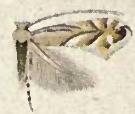
Phyllonorycter obscuricostella is a moth of the family Gracillariidae. It is known from Connecticut, Illinois, Kentucky, Pennsylvania, Maine and New York in the United States.
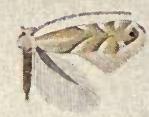
Phyllonorycter ostryaefoliella is a moth of the family Gracillariidae. It is known from Canada and the United States.
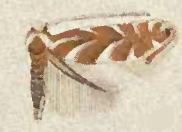
Phyllonorycter argentinotella is a moth of the family Gracillariidae. It is known from Québec in Canada and Illinois, Kentucky, Pennsylvania, New York, Vermont, Connecticut and Massachusetts in the United States.

Phyllonorycter tritaenianella is a moth of the family Gracillariidae. It is known from Québec in Canada and Illinois, Kentucky, Maine, Michigan, New York, Connecticut and Massachusetts in the United States.
Cameraria affinis is a moth of the family Gracillariidae. It is known from Quebec, Canada, and the United States.
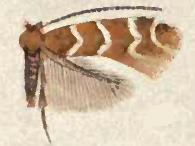
Phyllonorycter mariaeella is a moth of the family Gracillariidae. It is known from Canada and the United States.
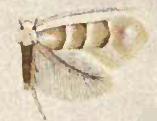
Phyllonorycter tiliacella is a moth of the family Gracillariidae. It is known from Canada and the United States.
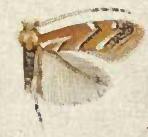
Cameraria saccharella is a moth of the family Gracillariidae. It is known from Ontario and Quebec in Canada, and Illinois, New Jersey, Ohio, Maine, New York, Connecticut and Vermont in the United States.
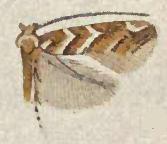
Cameraria cincinnatiella is a moth of the family Gracillariidae. It is known from Ontario and Quebec in Canada, and the United States.

Cameraria conglomeratella is a moth of the family Gracillariidae. It is known from Illinois, Kentucky, Texas, California, Florida, Georgia, Maryland, New Jersey, Ohio and Virginia in the United States.
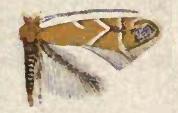
Cameraria platanoidiella is a moth of the family Gracillariidae. It is known from Connecticut, New York and Ohio in the United States.

Cameraria guttifinitella is a moth of the family Gracillariidae. It is widespread in North America.
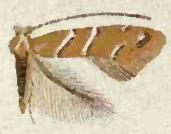
Cameraria aesculisella is a moth of the family Gracillariidae. It is known from the United States.

Cameraria hamameliella is a moth of the family Gracillariidae. It is known from Ontario, Québec, and Nova Scotia in Canada and throughout the eastern United States.
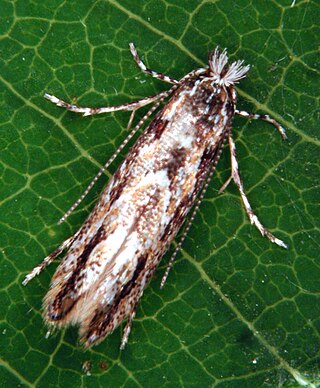
Lithocolletinae is a subfamily of insects in the moth family Gracillariidae. It is distributed worldwide, with most species in temperate regions.
Phyllonorycter trochetellus is a moth of the family Gracillariidae. It is found in Mauritius.

Gracillariinae are a subfamily of moths which was described by Henry Tibbats Stainton in 1854.
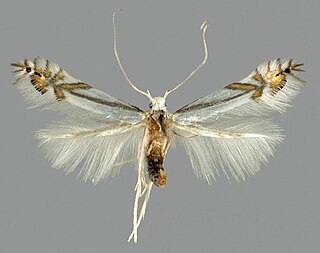
Phyllocnistinae is a subfamily of insects in the moth family Gracillariidae.





